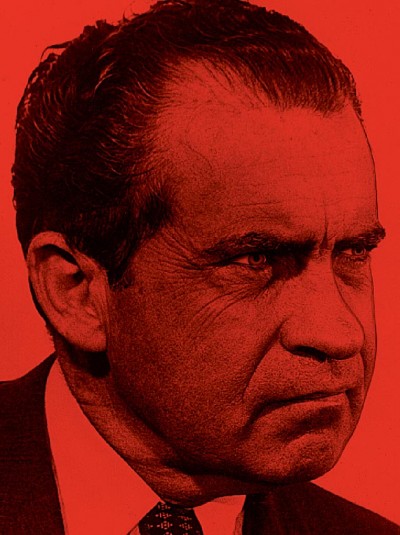The title, How the End Begins: The Road to a Nuclear World War III, could not be more ominous or, depending on your perspective on nuclear weapons, alarmist. Author Ron Rosenbaum has a definitive point of view about the danger of nuclear weapons as he waxes throughout the book about holocausts and the immorality of mass retaliation. Rosenbaum does not, however, ignore the side of the nuclear believers who state that nuclear weapons, through deterrence, have actually made the world safer and saved millions of lives. Rather than a driven point of view, Rosenbaum instead takes the reader on a meandering path pondering the history, danger, role, and, most importantly, morality of nuclear weapons.
Rosenbaum takes on a rather passive role as an observer and questioner throughout the book. The heart of the book is really posed in the question of mass retaliation. That is, if a nation has been destroyed or nearly destroyed, is it moral to retaliate for no other reason than vengeance which may likely end the human race? Rosenbaum asks various powerful or influential people including the US commander of nuclear weapons this question and to Rosenbaum’s apparent dismay, none would or could responsibly give a valid answer. But of course, to answer that “forbidden” question is to undermine what’s been the status quo since the Cold War and what we now rely upon: deterrence.
Deterrence is the theory that mass nuclear retaliation is an inevitability for any nation that launches a first strike nuclear attack. In other words, if you unleash nuclear weapons, you too will be destroyed by a retaliatory attack. Proponents of deterrence say that not only has it prevented nuclear war, but it has also saved millions of lives by preventing non nuclear wars from either occurring or escalating. Yet there is a very real and discouraging paradox that underlies deterrence as it relates to the morality of retaliation. Any mention that a retaliation is not inevitable intensifies the probability that a party attempt a first strike against the nation. So there’s this Faustian deal that is implicit with nuclear weapons, in that there is no middle ground and retaliation must be guaranteed. The safety provided by deterrence is guaranteed by the promise of mutually-assured destruction.
Mutually-assured destruction (MAD) was a very real possibility in the midst of the Cold War with the Soviet Union and the US always at a “hair trigger” notice. In fact, Rosenbaum goes through in the beginning of the book a series of near misses that the world has already witnessed. However, in the Cold War there was some level of stability between the two superpowers and deterrence worked as well as could be expected. Post Cold War is a period of nuclear instability as countries like North Korea gain nuclear weapons. We see a tense Pakistan and India situation with the added concern of terrorists accessing Pakistan’s nuclear stock. Also, the problem of the Middle East as a whole being a tinderbox for igniting a global nuclear holocaust seems all too real. Rosenbaum does an excellent job at highlighting both Cold War and post Cold War areas of concern, some of which like the “hair trigger” alert levels still haven’t changed despite the demise of the Soviet Union and the end of the Cold War. Rosenbaum also highlights the Israel attack on Syria in 2007 that, again, could have possibly started a World War III with nuclear weapons involved. The end of the Cold War has not given any relief to the notion that nuclear holocaust seems probable, whether by accident or by malice if history stays on course.
Ultimately, that’s where Rosenbaum’s book comes through strongest: nuclear weapons being unleashed are only a matter of time and scale. If changes are not made to the status quo, it’s quite likely (even statistically quantifiable) that we will see the engagement of nuclear weapons. At that point, the “forbidden question” will require an answer and that answer will shape the future of mankind. In his final chapter, “Endgame,” Rosenbaum does lay out some proposals to mitigate the risk. Rosenbaum also delves into the deep, inherent problems of “Zero” or eradicating nuclear weapons all together. The “Zero” policies, while idyllic, are pragmatically impossible as the knowledge will always be available which creates too many problems for any nation to give up nukes 100%. Rosenbaum instead settles on the notion of minimal deterrence, the least amount of deterrence needed to prevent a nuclear war but not risk mass destruction of humanity.
The threat of nuclear destruction is one of the most pressing concerns of humanity and one that most of us probably feel utterly powerless about. Even the knowledge of the threat provided in How the End Begins: The Road to a Nuclear World War III begins serves more to scare than to provoke into action. Nuclear policy is not like other political issues, like say tax policy or even Iraq War policy, where in a democratic nation one can have their voice heard and their vote accounted for. Nuclear policy and decision making will be made by likely a few people, maybe not even elected and it will be made in the course of minutes not election cycles, and that is a scary thought. As Rosenbaum pointed out, a possibly unbalanced Richard Nixon made the point very succinctly when he stated, “I could leave this room and in 25 minutes 70 million people would be dead.”

“The Great Threat We Must Conquer; Nobody Will Survive This War.”
Tune in 7PM EST Monday Night, Feb. 6, 2012 for Lyndon LaRouche Emergency Presidential Webcast at http://www.larouchepac.com
Great book 🙂